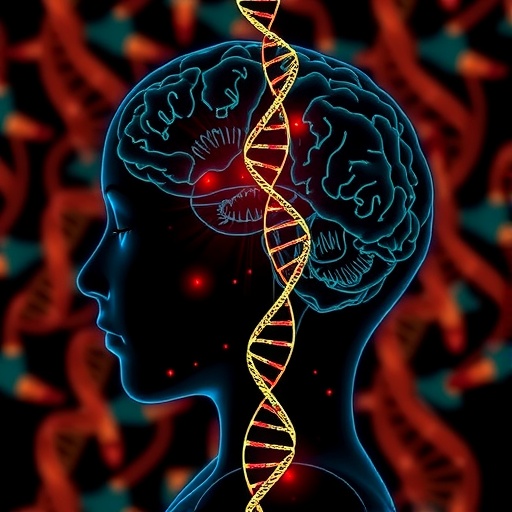BOSTON- Researchers at Boston Medical Center (BMC) and Boston University School of Medicine (BUSM) have found that using a black light, or Wood's light, helps dermatologists determine disease extent of melasma, a hyperpigmentation condition that causes brown and gray patches to appear on the face.
Melasma is most common among women, and often appears during pregnancy due to hormonal changes, leading many to refer to it as "the mask of pregnancy". Most people notice skin discoloration on their cheeks, forehead, chin and bridge of their nose. The patches can also appear on parts of the body that are exposed to the sun like the arms and neck. When left undiagnosed, the brown and gray spots on the skin continue to darken and can alter a patient's appearance and quality of life.
"In some cases, melasma can be very difficult to detect with the naked eye," said Neelam Vashi, MD, director of the Center for Ethnic Skin at BMC and Boston University. "Using a black light allows us to assess the extent of the disease and counsel patients on sun protection measures and treatment options."
A black light detects changes in color or fluorescence in the skin, making pigment disorders appear to shine under the light. It has been suggested as an aid in diagnosing melasma depth, but this is the first study to find a significant quantitative difference between viewing the skin under natural light versus under a black light when evaluating extent in those with subtle disease.
"Early detection is critical in treating this disease before it worsens. Without the use of a black light, the extent of the disease could go unnoticed and worsen over time with ultraviolet ray exposure or laser therapy. Treatment for melasma needs to be maintained, otherwise there is risk of the condition returning", said Vashi who is also an assistant professor of dermatology at BUSM.
Melasma treatments include topical creams, chemical peels, microdermabrasion, and sun protection. Researchers recommend that women protect themselves by applying sunblock every two hours when out in the sun or avoiding sun exposure altogether for those with a genetic predisposition, who are pregnant or have a known family history of melasma.
The study was published online in the Journal of the American Academy of Dermatology.
###
About Boston Medical Center
Boston Medical Center is a private, not-for-profit, 496-bed, academic medical center that is the primary teaching affiliate of Boston University School of Medicine. It is the largest and busiest provider of trauma and emergency services in New England. Committed to providing high-quality health care to all, the hospital offers a full spectrum of pediatric and adult care services including primary and family medicine and advanced specialty care with an emphasis on community-based care. Boston Medical Center offers specialized care for complex health problems and is a leading research institution, receiving more than $119 million in sponsored research funding in fiscal year 2015. It is the 11th largest recipient of funding in the U.S. from the National Institutes of Health among independent hospitals. In 1997, BMC founded Boston Medical Center Health Plan, Inc., now one of the top ranked Medicaid MCOs in the country, as a non-profit managed care organization. It does business in Massachusetts as BMC HealthNet Plan and as Well Sense Health Plan in New Hampshire, serving more than 315,000 people, collectively. Boston Medical Center and Boston University School of Medicine are partners in the Boston HealthNet – 14 community health centers focused on providing exceptional health care to residents of Boston. For more information, please visit http://www.bmc.org.
About Boston University School of Medicine
Originally established in 1848 as the New England Female Medical College, and incorporated into Boston University in 1873, Boston University School of Medicine (BUSM) today is a leading academic medical center with an enrollment of more than 700 medical students and 950 students pursuing degrees in graduate medical sciences. BUSM faculty contribute to more than 668 active grants and contracts, with total anticipated awards valued at more than $693 million in amyloidosis, arthritis, cardiovascular disease, cancer, infectious diseases, pulmonary disease and dermatology, among other areas. The School's teaching affiliates include Boston Medical Center, its primary teaching hospital, the Boston VA Healthcare System, Kaiser Permanente in northern California, as well as Boston HealthNet, a network of 15 community health centers. For more information, please visit http://www.bumc.bu.edu/busm/
Media Contact
Jessica Lyons
[email protected]
617-638-6838
@BostonUNews
http://www.bmc.org




